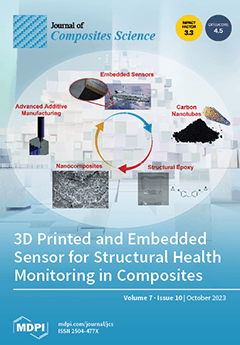Because of the expensive nature of sensors used to detect heavy metals and the severe health risks associated with certain heavy metals, there is a pressing need to develop cost-effective materials that are highly efficient in detecting these metals. A flower-shaped WO
2I
2-Poly(1H-pyrrole) (WO
2I
2/P1HP) nanocomposite thin film is synthesized through the oxidation of 1-H pyrrole using iodine and subsequent reaction with Na
2WO
4. The nanocomposite exhibits a distinctive flower-like morphology with an average size of 20 nm. Elemental composition and chemical structure are confirmed via X-ray photoelectron spectroscopy (XPS) analyses, while X-Ray diffraction analysis (XRD) and Fourier-transform infrared spectroscopy (FTIR) analyses provide further evidence of crystalline peaks and functional groups within the composite. The potential of the nanocomposite as a sensor for Cd
2+ ions is determined using two approaches: simple potentiometric (two-electrode cell) and cyclic voltammetric (three-electrode cell) methods, over a concentration range spanning from 10
−6 to 10
−1 M. From the simple potentiometric method, the sensor showcases strong sensing capabilities in the concentration span of 10
−4 to 10
−1 M, displaying a Nernstian slope of 29.7 mV/decade. With a detection limit of 5 × 10
−5 M, the sensor proves adept at precise and sensitive detection of low Cd
2+ ion concentrations. While using the cyclic voltammetric method, the sensor’s selectivity for Cd
2+ ions, demonstrated through cyclic voltammetry, reveals a sensitivity of 1.0 × 10
−5 A/M and the ability to distinguish Cd
2+ ions from other ions like Zn
2+, Ni
2+, Ca
2+, K
+, Al
3+, and Mg
2+. This selectivity underscores its utility in complex sample matrices and diverse environments. Furthermore, the sensor’s successful detection of Cd
2+ ions from real samples solidifies its practical viability. Its reliable performance in real-world scenarios positions it as a valuable tool for Cd
2+ ion detection across industries and environmental monitoring applications. These findings advocate for its utilization in commercial settings, highlighting its significance in Cd
2+ ion detection.
Full article





